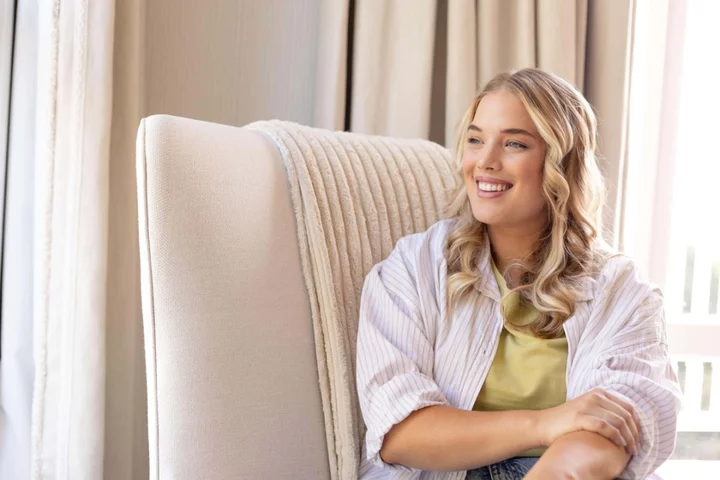
Vitamin D intake ‘may reduce cancer mortality in the population by 15%’ – study
Taking regular Vitamin D supplements may reduce cancer deaths in the population by 15%, according to scientists. Data gathered from the UK Biobank, an online database of medical and lifestyle records of around 500,000 Britons, indicates vitamin D deficiency is linked to an increased cancer mortality risk – particularly in relation to bowel, stomach, prostate, and lung cancers. The researchers said their work, published in Elsevier’s European Journal of Cancer, adds to evidence that vitamin D may have a protective effect against cancer. While the findings do not explain why this happens, the team said one possibility is that vitamin D supplements may induce anti-inflammatory, antioxidant, and DNA damage repair mechanisms, which can thwart mutations that allows tumours to grow. Study author Ben Schottker, an epidemiologist at the German Cancer Research Centre, said: “Our findings identified a statistically significant relationship between vitamin D deficiency and increased mortality among several cancers. “These results can be explained by other studies, which found mechanisms by which vitamin D inhibits cancer growth and metastasis.” The NHS advice is that adults and children over four take a daily supplement containing 10 micrograms of vitamin D throughout the year. According to the Department of Health and Social Care, around one in six adults and almost 20% of children in the UK have vitamin D levels lower than government recommendations. Older people, the housebound and people from black and South Asian communities are more likely to have lower levels of vitamin D. Our findings identified a statistically significant relationship between vitamin D deficiency and increased mortality among several cancers Ben Schottker For the study, the researchers looked at data from more than 400,000 people aged 40–69. In-depth medical information was gathered through blood, urine and saliva samples. A short interview and a questionnaire as used to assess vitamin D consumption as well as lifestyle factors such as alcohol consumption, smoking. Follow-up data on health outcomes were gathered through NHS links as well as care data, cancer screening data, and disease-specific registers. Over a period of nearly 13 years, close to 13,000 people died of cancer. Results showed a majority of the study population had either vitamin D deficiency (21.1%) or insufficiency (34.4%) – used to describe low levels of vitamin D. Of the people involved in the study, only 4.1% regularly took a vitamin D supplement and 20.3% regularly took a multivitamin. Results showed that vitamin D supplement users had 15% lower total cancer mortality and 25% lower lung cancer mortality compared to those who did not take the supplement. The also found researchers found that those with vitamin D deficiency had 42% increased mortality for stomach, 27% for bowel, 24% for lung, and 36% for prostate cancers. Meanwhile those with vitamin D insufficiency were found to have 14% increased bowel cancer mortality and 19% increased lung cancer mortality. The scientists said that the potential to reduce cancer mortality by vitamin D supplementation in populations with low levels should be further explored in new research. Commenting on the study, Dr Jenna Macciochi, senior lecturer in immunology at the University of Sussex, said: “This study adds to the growing body of evidence on vitamin D and cancer. “Vitamin D plays multiple key roles in immune health and the immune system is part of the body’s cancer defence system. “With cancer rates rising and presenting a serious public health issue, its useful to have further insight into the role of vitamin D in the prevention of cancer.” But Dr Macciochi also cautioned that the Biobank data might not be diverse and representative of the whole of the UK population. Alex Ruani, doctoral researcher at University College London and chief science educator at The Health Sciences Academy – who was not involved in the study, said that the exact dosage taken by participants was not ascertained and the risk reduction was not the same for all cancers. She said: “This research doesn’t imply that taking vitamin D3 supplements will for sure lower your risk of death from cancer. “Supplementation may help with consistent vitamin D levels, whereas production from sunlight can be variable and dependent on weather, time of the day, exposure duration, being outdoors or indoors, protective UV wear or sunblock, and many other factors.” She added: “Common food sources of vitamin D3 include full-fat dairy, egg yolks, and fish. “Although toxicity is rare, there is an upper tolerable limit set in the UK, where vitamin D3 supplementation shouldn’t exceed 100 micrograms a day.”
1970-01-01 08:00

Men who cycle, jog or swim could cut risk of nine cancers – study
Male joggers, swimmers and cyclists could be cutting their risk of nine cancers, a new study suggests. Researchers found that men with good cardiorespiratory fitness are far less likely to go on to develop cancers of the head and neck, stomach, pancreas, liver, bowel, rectum, kidney, lung and oesophagus. Cardiorespiratory fitness refers to a person’s ability to do aerobic exercise, such as running, cycling and swimming for sustained periods, or even to climb stairs. The new study, published in the British Journal of Sports Medicine, saw experts from Sweden track just over a million men for an average of 33 years. The men involved in the study were conscripted to military service in Sweden between 1968 and 2005. At the start of their conscription the men underwent a battery of tests assessing a number of factors including their height, weight, blood pressure, muscle strength and cardiorespiratory fitness. During the follow-up period, about 84,000 developed cancer. Researchers found that, compared with those with low cardiorespiratory fitness, men with a higher level of cardiorespiratory fitness were: – 19% less likely to develop head and neck cancer.– 39% less likely to develop cancer of the oesophagus (food pipe).– 21% less likely to develop stomach cancer.– 40% less likely to have liver cancer.– 18% less likely to develop bowel cancer and 5% less likely to develop cancer of the rectum– 20% less likely to develop kidney cancer.– 42% less likely to develop lung cancer.– 12% less likely to develop pancreatic cancer. “These results could be used in public health policymaking, further strengthening the incentive for promoting interventions aimed at increasing [cardiorespiratory fitness] in youth,” the authors wrote. The researchers did find that higher cardiorespiratory fitness was linked to a slight (7%) increased risk of prostate cancer and a 31% increased risk of skin cancer. A previous study examining the same data set suggested the slight increase in risk for prostate cancer was not linked to a higher rate of aggressive prostate cancer or prostate cancer death, and could be attributable to increased screening. The authors suggested a higher skin cancer rate could be explained due to “higher UV exposure”. Read More Charity boss speaks out over ‘traumatic’ encounter with royal aide Ukraine war’s heaviest fight rages in east - follow live Why are wellbeing experts concerned about TikTok’s ‘lazy girl job’ trend? Red flags you might be missing about your child’s online safety Rumer Willis says she is ‘grateful’ to her body following birth of daughter
1970-01-01 08:00

Why are wellbeing experts concerned about TikTok’s ‘lazy girl job’ trend?
Have you clocked TikTok’s ‘lazy girl job’ trend? It’s all about prioritising work-life balance over a job that drains you dry. A ‘lazy girl job’ is one that pays well enough for you to live comfortably – but doesn’t need to define your entire self-worth and consume too much of your time and energy. On the surface, this all sounds quite healthy, a backlash to the always-on ‘hustle culture’ that’s become ingrained in the modern world. So, why are wellbeing experts concerned? Work-life balance isn’t lazy “Turning your back on hustle culture shouldn’t be deemed ‘lazy’,” Tina Woods, CEO of Business for Health, a business-led coalition focused on improving workforce health, told PA Media. “A healthy work-life balance should be encouraged, rather than shamed, and employees shouldn’t feel guilty or ashamed for prioritising their wellbeing and mental health over their work duties and workload.” So, it’s not so much the concept behind ‘lazy girl jobs’ that’s problematic. Rather, it’s the use of the word ‘lazy’ to describe somebody who works a reasonable number of hours and values their wellbeing, and the reasons we got to this point in the first place. Have we normalised overworking? There may be times when people need or choose to hustle, or devote a larger chunk of their time towards a particular goal. That’s not something we need to sweepingly demonise necessarily. “Just as we shouldn’t shame employees who do set boundaries in the workplace and [want] a healthy work-life balance, there will be some employees who enjoy ‘hustle culture’,” Woods added. “Ultimately, employees should have the choice and flexibility to work how they choose to.” What isn’t good though is how “overworking” has become “expected” as part of modern working culture, she explained. We’re seeing a growing culture of overworking being celebrated... Tina Woods, Business for Health CEO “Hustle culture has grown in popularity since the pandemic, with side hustles on the rise amongst employees, especially Gen Z. However, the notion of pushing yourself and putting your all into your work can cause both physical and mental effects. It can lead to a toxic working pattern and trigger stress and burnout, as well as physical ailments such as disrupted sleep patterns and exhaustion,” said Woods. “More often, we’re seeing a growing culture of overworking being celebrated and, in many situations, expected. Whether this presents itself through staying at the office late, or not taking a lunch break or annual leave, working tirelessly is being rewarded by some seniors, and it shouldn’t become the norm.” What does this mean for young women? The fact the trend has been centred on ‘girls’ is another point of consideration. “Traditionally, women and especially mothers have faced stigma in the workplace. This includes stigma around personality traits, maternity leave and women’s health. As a result, many female employees will feel the need to push themselves harder or work longer hours than their male peers,” said Woods. “Women and parents are more likely to report lower mental health, putting them more at risk for mental health conditions such as anxiety and depression. This, coupled with the pressure women may already feel at work and stigma, such as the latest ‘lazy girl job’ trend, means employers need to ensure they’re creating a supportive work culture and healthy environment.” Culture shift According to Woods, there is a responsibility for employers to drive cultural shifts towards a healthier approach to work with a focus on preventative measures, rather than waiting until employees are encountering problems such as burnout or chronic stress, and then responding. “Setting boundaries that lead to a healthy work-life balance is something that should be encouraged in the workplace. It’s clear that post-pandemic, the boundaries have become blurred, with many adapting to hybrid and remote working. However, this is an issue employers need to make a priority,” said Woods. “By doing so, workplaces will see higher levels of presenteeism, alongside boosted morale, engagement and productivity. In a tight labour market, attracting and retaining employees is also vital. Wellbeing plays a big role in that. “Policies such as ‘Permission to Pause’ can be really powerful in encouraging a healthy work-life balance. They give employees autonomy and the ability to stop and take some time for their wellbeing within the working day, without feeling guilty,” she added. “Perhaps, most importantly of all, employers need to listen and respond to the needs of their own workforce and sector, recognising there is no ‘one size fits all’ solution to health and wellbeing, because everyone is uniquely human. Business leaders, HR managers and line managers can work to better understand the needs of their workforce through pulse surveys, interviews, and open forums.” Read More Charity boss speaks out over ‘traumatic’ encounter with royal aide Ukraine war’s heaviest fight rages in east - follow live Red flags you might be missing about your child’s online safety Rumer Willis says she is ‘grateful’ to her body following birth of daughter Sugary cereals and yoghurts must remove child-friendly packaging – health group
1970-01-01 08:00

Trump's allies have long faced legal troubles, but this time is different because he is too
The power of the presidency always lures those seeking reflected glory. And Donald Trump's riotous palace court -- renowned for lax Oval Office walk-in privileges -- was a pageant of characters who might normally have gotten nowhere near a president.
1970-01-01 08:00

Parents of nine-year-old high school graduate reveal their number one parenting tip
David Balogun is a normal kid who competes in paper airplane races with his younger sister, Eliana and struggles to sit still, but he is also one of the youngest people in the United States to receive a high school diploma. In late January, Balogun graduated from Reach Cyber Charter School, which is a tuition-free online school in Pennsylvania. This month he will be starting classes at Southern New Hampshire University as a full-time student. Balogun and his parents, Ronya and Henry, spoke about what it was, and still is, like raising someone with a high intellect on CNBC Make It. The couple said they first tested their son’s intelligence when he was six years old. After that, they began to rethink any parenting philosophies they previously had. “There’s no book on it,” Ronya said. “You’ve got to develop a different mindset as a parent,” Henry added. “It’s not always easy when your son is asking you questions constantly. You have to keep answering the questions, because you don’t want to say, ‘Just leave me alone.’” Because of David’s unique circumstances, they’ve developed their own number one rule: When a system isn’t built for your child, don’t try to fix your child. Try to fix the system. Ronya said when David was in first grade, a regular classroom wasn’t working anymore, noting that sometimes his peers would listen to him more than the teacher. So they looked into their state’s gifted programs, which also proved to not be rigorous enough for their nine year old. In 2020, his parents enrolled him in Reach which allowed him to individualise his curriculum and take high school level classes. Although that didn’t come without challenges, including multiple calls to The College Board because David’s birthdate was too young to enroll in advanced placement exams. As for deciding on college, Ronya said she had to put her foot down mentioning she didn’t want David in a class filled with 20 year olds. “It’s a different adaptation that we don’t have in the United States of America yet. It’s very scary, you can’t find this,” she said. “Sometimes I can’t fix the system, but there are other unconventional choices and solutions to help lead my son through his journey to fulfill his dreams.” Trust is also a big part in parenting David, his parents said. They mentioned that, when he was learning specific skills like adding and subtracting negative numbers before he was taught, they had to believe he knew how. “I can’t tell him, ‘This is what you know,’ because I’m not in his brain,” Ronya said. “I have to trust him to be partially leading the way.” Although there are some boundaries in this trust, as David came home one day claiming he now knew where babies came from. His mother was able to briefly give him some information on reproductive anatomy before putting the conversation to a stop. “Mind you, at this moment, I’m talking to a six year old,” Ronya said. In terms of what happens to David beyond college, his parents are unsure and are just figuring it out as they go along. “There is no frame of reference,” Ronya said. “So you know how sometimes when there is no path, you start a new path? Yep, that’s what we’re doing.” The Independent has contacted Ronya and Henry for comment. Read More TikToker urges parents to save old clothes for their children after inheriting mother’s wardrobe Mother criticises ‘double standard’ after husband is praised for taking toddlers to grocery store Mother sparks viral debate for ‘shaming’ parent who refused to give her daughter a slice of cake TikToker urges parents to save all their old clothes for children to inherit Gen X mother goes viral for attack on ‘tired’ American Dream Couple discovers why their child thought ‘mums foam at the mouth while having babies’
1970-01-01 08:00

Braves Rumors: Charlie Culberson goes AWOL, Albies injury, Shuster concern
Braves Rumors: When will Ozzie Albies be back in the lineup?Atlanta Braves second baseman Ozzie Albies was placed on the 10-day injured list on Tuesday. In his place, Brian Snitker is expected to start Nicky Lopez and Vaughn Grissom, who was called up to the active roster.For Grissom, this rep...
1970-01-01 08:00

NBA Rumors: Potential Cavs trade, Damian Lillard update, Harden regrade
NBA Rumors: Cavs interested in P.J. Washington sign-and-tradeP.J. Washington is the biggest name left unsigned as the NBA free agency period stagnates. Washington desires a long-term deal worth $20 million annually, a request the Charlotte Hornets are unwilling to oblige. His options are running t...
1970-01-01 08:00

Red flags you might be missing about your child’s online safety
During the wait for improved online safety laws, tens of thousands of grooming crimes have been recorded. The Online Safety Bill, which is meant to become law this autumn, has encountered numerous delays and changes since it become a proposed legislation. As a result, the children’s charity NSPCC has called on MPs and tech giants to support the Bill, especially since 34,000 online grooming crimes had been recorded by UK police forces over the last six years, since first calling for more robust safety regulations in 2017. Based on data from 42 UK police forces, the NSPCC said that last year, 6,350 offences related to the sexual communication with a child were recorded. Some 5,500 took place against primary school-aged children, and 73% of the crimes were related to Meta-linked platforms or Snapchat. NSPCC chief executive Sir Peter Wanless said: “The number of offences must serve as a reminder of why the Online Safety Bill is so important and why the ground-breaking protections it will give children are desperately needed. “We’re pleased the government has listened and strengthened the legislation so companies must tackle how their sites contribute to child sexual abuse in a tough but proportionate way, including in private messaging.” Here are some of the red flags parents should be on the look out for. Being secretive about how they are spending their time On their website, Childline define grooming as someone building a child’s trust to make a connection in order to do something sexual or illegal. “Studies show parental supervision typically declines as children get older, however online abuse does not,” said Mark Bentley, safeguarding and cyber security lead at charity The National Grid for Learning (LGfL). From being secretive to omitting relevant information, changes in behaviour can vary from child to child. But it’s something for all parents to be mindful of when their child starts using social media more. “Unfortunately, as in many areas of child protection, indicators of abuse can often mirror natural markers of growing up,” said Bentley. “As children and adolescents develop, they seek independence from parents, engage in risk taking and have changes in mood and friendship group. “Nonetheless, these markers remain vital to watch out for, even if it is just to support your growing child. Those who are being groomed online are much more likely to be defensive and secretive about phone usage and loathed to be separated from their device.” Having unexplained gifts, big or small Buying gifts for children, whether big or small, can be another grooming technique used to flatter children and their families. “Some groomers have been known to provide alternative phones just to contact them, and this is always a red flag if you suspect your child may have a secondary device,” said Bentley. They are spending too much time onlineSocial media may promote negative experiences if no boundaries have been established.“Of course, some of these [red] flags can also be a sign of the child going through adolescence but it’s important to discuss any unusual behaviour with them as soon as possible,” said Simon Newman, member of International Cyber Expo’s advisory council and of the Cyber Resilience Centre for London.“The way groomers target children varies, but is often done through social media sites, text messages and apps, emails or online forums – particularly gaming sites.”They develop friendships with a much older person Children and young people can be groomed by a stranger or by someone they know – such as a family member, friend or professional, according to NSPCC. But the age gap between a child and their groomer can also be relatively small. The groomer may also work towards building a relationship with the family to gain trust, so they can be left alone with the child. “There are various models of the stages of grooming, but at heart it revolves around building up trust and making a child feel understood and listened to in a way they do not feel elsewhere, and then breaking down the links of trust to family, school, friends and other adults,” said Bentley. “Any parent thinking that this might be happening should definitely reach out for help.” Read More Charity boss speaks out over ‘traumatic’ encounter with royal aide Ukraine war’s heaviest fight rages in east - follow live Rumer Willis says she is ‘grateful’ to her body following birth of daughter Sugary cereals and yoghurts must remove child-friendly packaging – health group Clever kitchen storage solutions to clear the clutter
1970-01-01 08:00

Rumer Willis says she is ‘grateful’ to her body following birth of daughter
Rumer Willis says she is “grateful” to her body “for all that it did and continues to do” following the birth of her daughter. The US actress, daughter of Hollywood stars Bruce Willis and Demi Moore, said her body was “softer and rounder and jiggly” but acknowledged she was still readjusting following the birth. Willis announced her daughter’s birth on Instagram in April, writing that Louetta Isley Thomas Willis was “pure magic”. In a new post on Instagram, she shared a nude photo of herself, captioning it: “This body of mine made a human from scratch. She is the love of my life. “This body of mine that I spent so many years trying to shape and mould into what I thought was desirable or made me feel good in clothes, is a little softer and rounder and jiggly and different and that’s ok, more than ok it’s kind of amazing because I grew a person inside of it. “This little being that I love with a fierceness and wonder that reaches new levels everyday.” She added: “I know my body is still readjusting, but whatever shape it ends up in I am just grateful for all that it did and continues to do. “In the ongoing process of transformation, I am grateful for every twist and turn. “The most profound beauty I’ve ever felt in myself emerges from remembering daily, to not reject these parts of me, but just embrace and give them such deep gratitude.” Willis announced the birth of her daughter with partner Derek Richard Thomas just over two months after it was revealed her father had been diagnosed with frontotemporal dementia. The actor – who starred in hit films including the Die Hard series, Pulp Fiction, Armageddon, and Looper – has said that he will be “stepping away” from his successful career after being diagnosed with aphasia, a condition affecting his cognitive abilities.
1970-01-01 08:00

Sugary cereals and yoghurts must remove child-friendly packaging – health group
Breakfast cereals and yoghurts containing high amounts of sugar should remove any packaging that appeals to children, a health group has said. Action on Sugar called for the removal of such packaging on products graded as high or medium for sugars, salt or saturated fat, based on the Department for Health’s nutrition guidelines. Research by the group, based at Queen Mary University of London, compared cereals and yoghurts offered by different companies in the UK. It found 47% of cereals and 65% of yogurts contained a third of the maximum sugar recommendation for a four to six-year-old per 100g. Of these, products by supermarket chains Lidl and Aldi and international brand Nestle had the highest average sugar levels with packaging targeted at children. The packaging includes cartoon characters, animations, vibrant colours and familiar characters intentionally designed to attract the attention of a child. By contrast, healthier products tend to be sold in more plain packaging targeted towards adults. Only nine cereals and six yogurts in the research were found low in sugars. Lidl announced in 2020 that it would remove cartoon characters from all its own-brand cereal packaging in Britain. Breakfast cereals and yoghurts saw significant reductions in sugar levels between 2015 and 2020, at 14.9% and 13.5% respectively. But the Sugar Reduction Programme announced in the Government’s obesity plan in 2016 set a target of 20% in that timeframe. Dr Kawther Hashem, campaign lead at Action on Sugar, said: “It’s ludicrous that whilst breakfast cereals and yogurts celebrate the largest reductions in sugars during the Sugar Reduction Programme, those same products with child-appealing packaging still have excessive amounts of sugars, unsuitable for regular intake by children. “Given the soaring numbers of under-18s suffering weight-related health problems and tooth decay being the leading cause of child hospitalisation, now is the time for companies to be forced to remove child-appealing packaging from products that are misleading parents and making our children unhealthy and sick.” A spokesperson for Nestle said: “We are committed to developing food and drink products that are tasty, nutritious and more sustainable. We offer a broad portfolio of cereals and yoghurts to meet consumer demand and ensure there is an option to suit everybody. “Since 2003, Nestle Cereals embarked on a significant and consistent work of reformulation meaning 84% of the portfolio is now classed as not high in fat, salt and sugar (non-HFSS) according to the UK Government’s nutrient profiling model. “That is 18 products within our cereal portfolio in the UK that are non-HFSS and contain no red traffic lights. Our yoghurt portfolio has also made significant steps in reformulation and has seen a reduction of 20 per cent of sugar across our products.” Aldi said it was “committed to reducing sugar in key areas that lead to children’s sugar intake as part of its work to tackle obesity among children”. The company added that defining packaging with vibrant colours as appealing to children was “misleading” and had led to “skewed results”. Read More Charity boss speaks out over ‘traumatic’ encounter with royal aide Ukraine war’s heaviest fight rages in east - follow live Clever kitchen storage solutions to clear the clutter 5 ornamental grasses to add movement to your garden How quitting smoking can boost your health and finances – as Government considers adding messages to cigarette packs
1970-01-01 08:00

Highest-paid NBA player on each team in 2023: Which teams are spending max contracts wisely?
Who is the highest-paid NBA player on each team? Are teams spending their max contracts wisely like the Denver Nuggets with Nikola Jokic and the Los Angeles Lakers with LeBron James?NBA teams have a limited amount of resources to build a championship team. The salary cap, Bird rights, max contra...
1970-01-01 08:00

Fact check: 10 of the lies Trump used to try to overturn his Georgia defeat
Former President Donald Trump's attempt to overturn his defeat in Georgia in the 2020 presidential election was built on lies.
1970-01-01 08:00
